Editor’s Note: We are still marching through the remarkable career of RADM Donald “Mac” Showers, which spanned the rise to zenith of The American Century. I will get us to Vietnam one of these days. But trust me, we are going to wrap this up in a month or two.
– Vic
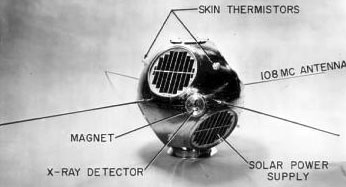
(GRAB reconnaissance satellite, circa 1961. One of them hangs in a stairwell at the Office of Naval Intelligence).
It was winter, and that meant that the sky outside Willow was dark as we arrived, and the little vestibule between the inner and outer doors to the bar side of the restaurant was welcome to prevent the chill wind from blowing in.
It seemed to be a Wednesday, for some reason best known to itself, and at the office across the street there were five proposals in progress with the capture guys screaming at the Proposal Managers, the day workers being expected to contribute deathless technical prose in the hours after the day-job was wrapped up.
There is nothing I hate quite as much as proposal writing, and it was hard to change gears and just talk to Mac. I actually had a decent notebook with me, for a change, since the big IT conference in Detroit that summer had provided fancy wire-backed hard cover books that we could fill up with all sorts of interesting information. I brought it with me and was proud to be half-way prepared for a session with Mac Showers.
“So, last time we talked you were the head of “Y” Branch in the Pentagon. Can you tell me what was going on in 1961?”
“Space Age. We had a significant role in the development, launch and operations of the Navy’s first ELINT satellite activities.”
“There is a big exhibit I saw out at the National Reconnaissance Office about GRAB and POPPY vehicles. That was amazing that Navy was first into orbit for satellitte recce. POPPY was still in orbit when I joined the navy almost forty years ago.”
“There was no NRO then as we know it today. GRAB- the Galactic Radiation and Background collection satellite- had been launched by the Naval Research Laboratory early in 1961 and was actually orbiting and collecting ELINT over denied areas. I think this may still be classified, because this satellite was launched under the guise of a solar radiation detector. It was openly advertised satellite for the purpose of collecting solar radiation measurements.”
“Did it?”
“Yes, and very well. But, more importantly, it also collected ELINT from the Soviet landmass.”
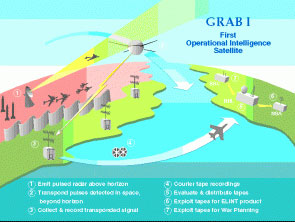
I took a long refreshing pull from my glass of Happy Hour White. It was particularly crisp- Willow uses the low special hour price as a loss-leader to get people to drink more and order from the bar menu. “Electronic Intelligence, like radar and other signals the Soviet ships would put out while operating on the high seas.” I remembered the old watchword from the Ocean Surveillance System: “Live by ELINT, die by ELINT. “In my day, we had a thing called “hull-to-emitter-correlation” where we could actually identify the exact ships by their unique frequency signature.”
Mac nodded and took a sip of Anchor Steam beer. He was in a better mood than I was since the Docs had given special dispensation for him to have a real beer for a change. “Over time, several of these satellites were launched and did collect intelligence effectively, and the results were analyzed. They turned out to be a very productive platform, and I’m certain they were the first ELINT satellites owned by anybody of any country.”
“Admiral, I was a budget guy like you at the end of my career, and wound up funding all sorts of strange things. How were the satellites paid for if they were a clandestine program? Was “Y” Branch a money manager as well as a substantive material and program manager?”
The Admiral looked into space for a moment, collecting his thoughts while appearing to examine the rows of Willow’s fine wines on the shelves behind the bar. “We probably had a hand in justifying the need for the collection in order to obtain the money, but it was Navy Research Lab money and we probably assisted, as I recall, on that as well as other projects. We helped NRL justify the need for the funds, but the money came out of research and development capital. Of course, there was the issue of divided chains of command. Since NRL was a laboratory, it reported up to the Assistant Secretary for R&D. That whose pot of money paid for the that project, plus the development of what we called the Big Dish at the Naval Security Group station at Sugar Grove, West Virginia.”
“I have been there when it was active and Byrd was pushing for more government activities to move out there. We had to respond to questions about the alternate Atomic Clock, and the FBI fingerprint labsI heard it was for sale to private owners once Senator Byrd was no longer the Chairman of the Appropriations Committee.”
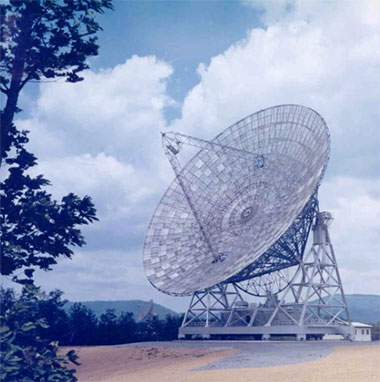
(NSGA sugar Grove’s Big Dish. It is for sale).
“Bobby Byrd was a magician in getting the bacon home to West Virginia. We tried to support other schemes, too, and spent many hours briefing people at the Pentagon and the government. The money was coming from Navy R&D to NRL for the construction of the Big Dish, which was to be a moon-bounce ELINT interceptor, a moon-bouncing communications ELINT and communications interceptor using the moon as our satellite, so to speak.”
“It is only fair, I suppose. Sugar Grove used to advertise that it was in a radio silence’ zone due to the mountains and the terrain. No interference from other terrestrial signals.”
“That’s how it was advertised by NRL. But it never panned out because the cost escalated to the point that it was shelved. It started out being about a $150 million dollar project, and then it crept up to $160, $170, $180 and began getting shaky when it went over $180, and as it approached $200 million, they killed it.”
“I hate it when that happens,” I said. “And that was in 1961 dollars. That was a pricey capability.”
“You mentioned Senator Byrd. There were some political aspects of that too, with all that money flowing into West Virginia; it tended to have some inertia to folks on the Hill.”
“I hate to think back on the number of things that went to West By God over the years he was in the Senate. I think a good deal of money has since flowed into West Virginia for similar purposes, but that didn’t happen on my watch. The “Y” Branch role in the NRL solar radiation satellite was to perform the tasking.”
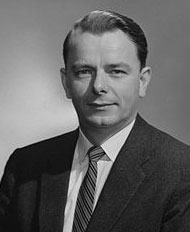
(Senator Robert Byrd, perhaps the most effective productive pork producer in U.S. Senate History).
“I remember the fights to get targets in the Soviet Far East into the collection deck for the imagery satellites. How did it work for Y Branch, translating technical collection requirement into instructions on the bird in orbit?”
“We had an outfit called “TOG,” which stood for “Technical Operations Group.” It was a very simple acronym, and was supported by the Naval Security Group, NRL, the Navy’s master engineer Howard Lorenzen, by the Science and Technical Intelligence Committee (STIC) in the form of Bill Howe, and by “Y” Branch’s Fred Welden before me, and then eventually myself. We met once a month to develop the tasking schedule for the on-off times for the sensor package to optimize collection on what we were interested in. We were restricted in what we could do, since to protect the secret of GRAB’s real mission, we couldn’t operate the satellite full-time when the bird was over the Soviet landmass. We had to operate it on a random and part-time basis so that we didn’t disclose the fact that it was collecting against certain targets at certain times.”
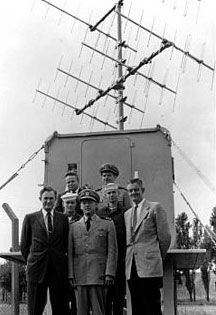
“Yeah. I was riding in a bus in an exercise and they parked us over a highway overpass to hide when the Soviet Satellites were scheduled to come overhead.”
“Yes- vulnerability to satellite reconnaissance, or SATVUL times. So the purpose of TOG was to work out the schedule and submit it to the operators of the satellite and the intercept stations who were copying the downlink at the Naval Security Group stations at Bremerhaven and in Japan.”
“This was science fiction stuff for the World War Two generation. Were you guys supposed to be experts on orbital mechanics and the operating characteristics of the satellite?”
“We were indeed. I even went down to Cape Canaveral and watched one of the launches. That was the first time I’d ever seen a launch. But I just recite that as one of the interesting things that made my year as head of “Y” Branch absolutely fascinating. One of the finest short tours of duty I ever had. But, early in that tour, and I’m talking now in late 1961, within a few months after I reported, I was called in by Admiral Lowrance who had become DNI, and he asked me if I thought I could handle the job of Fleet Intelligence Officer, CINCPACFLT.”
“What an opportunity to serve in Eddie Layton’s old office! What did you say?”
“My answer to Admiral Lowrance was that I was way too junior, I still only had a year in grade. I thought I was too junior to handle an assignment like that.”
“Funny about that. Your Boss in WWII, Admiral Nimitz, said the same thing when they picked him to go relieve Husband Kimmel after the attack on Pearl.”
“You are quite right on that. But a Chester Nimitz only comes along every couple generations.”
I nodded in agreement. Mac finished the last of his second beer, and announced that he needed to get to the dinner service back at The Madison across the street.
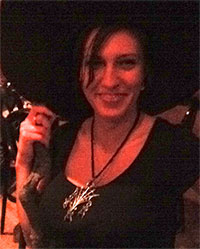
I waved at dark-haired Serena behind the bar to see if we could get the check. Mac got off lightly, since the night Liz-S awarded the admiral an official document saying he would henceforth be drinking for free at Willow. It is a much better deal than I am ever going to get! Old Jim has calculated our monthly tabs, and he claimed we pay about $1,400 a month in rent for the stools on which we sit, with alcohol included, of course. Thank goodness, it is not in 1961 dollars.
Copyright 2017 Vic Socotra
www.vicsocotra.com
